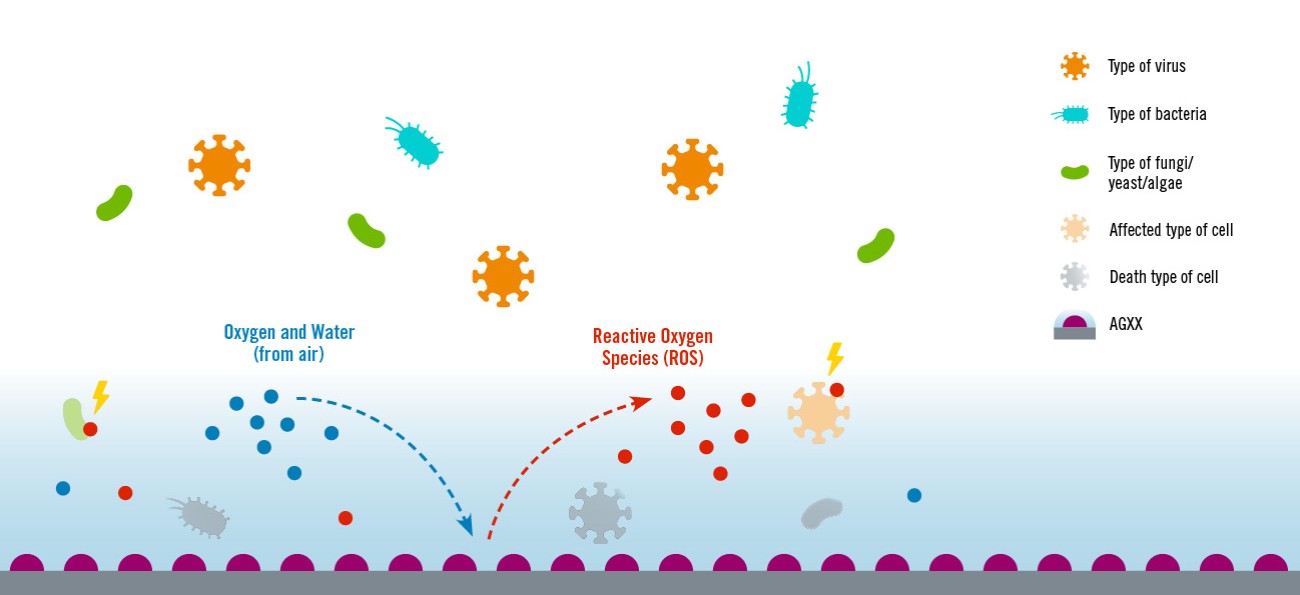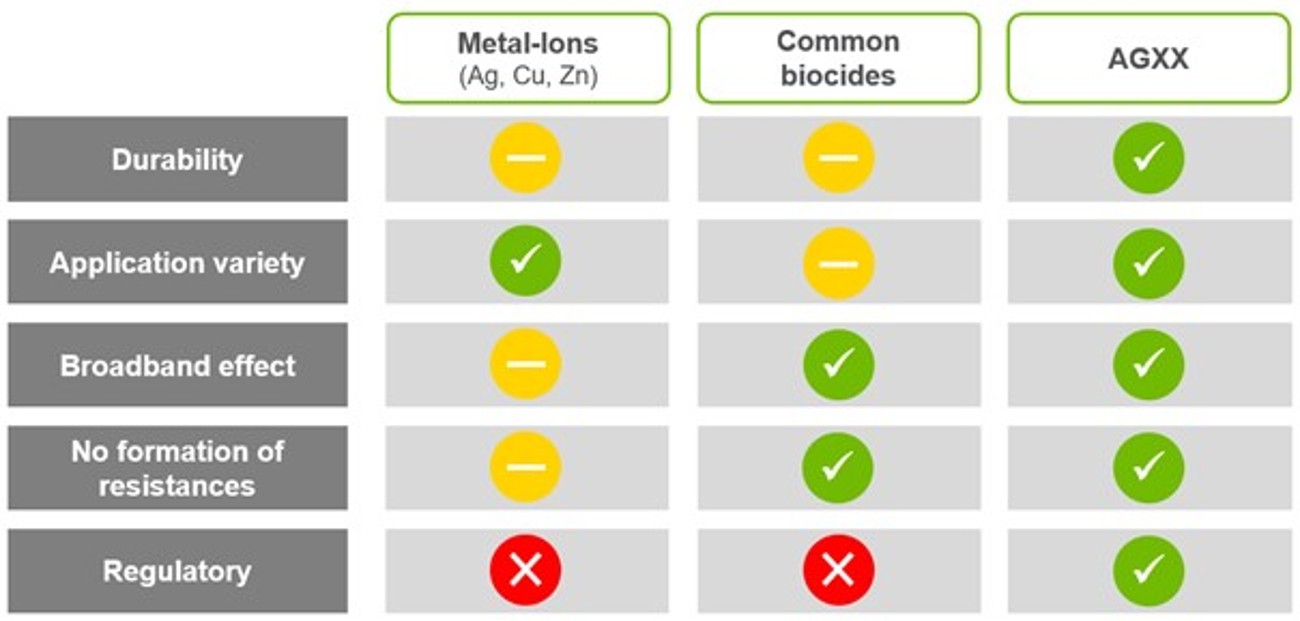AGXX is the innovative antimicrobial technology from Heraeus that works in a fundamentally different way than all conventional biocides, especially silver technologies.
AGXX is characterized by its innovative catalytic mechanism of action and thus offers numerous advantages compared to conventional antimicrobial technologies.
As a result of its innovative mechanism of action, AGXX's antimicrobial activity is long-lasting, effective against all types of microorganisms (i.e., bacteria, fungi, algae) as well as viruses, its effect is not based on the release of metals or harmful compounds into the environment, and additionally offers significant regulatory advantages.
AGXX particles kill microorganisms sustainably and highly efficiently, preventing contamination of products and surfaces and the formation of biofilms.
These properties make AGXX the perfect antimicrobial solution for a wide range of applications, including polymers, textiles, filters, paints, and coatings. Based on these properties, we at Heraeus are convinced that AGXX is the future in the combat against microorganisms and you can be a part of that future. Together we will find a solution for your products and eliminate the problems caused by microorganisms.










